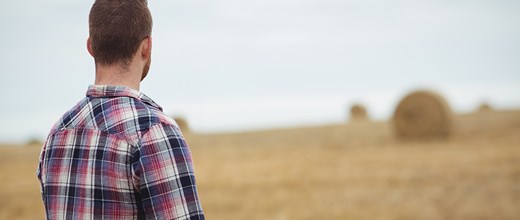- Home
- Changing your business
Changing your business
After assessing your situation and considering your future personal and business goals, you may conclude that you need to make significant changes to your business.
The following pages can help you explore what options are open to you. Discussing your options with consultants is important, and there are links to organisations who may be able to help. Talking things through with your family and those involved in your business is also essential.
If you are struggling, don’t go through stress alone. There are organisations who can help with advice and support, visit our support for farmers webpage for more information
Considering the viability of your current business model is the first stage in deciding what changes need to be made. Are you making enough profit? What are your costs, and what happens if they increase dramatically?
Your profit must be sufficient to meet annual cash requirements
- To maintain a static cash position on an annual basis, your profit must be sufficient to meet your annual cash requirements. Drawings is the amount you draw to cover private costs and living expenses. Tax is to cover income/corporation tax and national insurance costs
- Where profits are likely to have reduced significantly from previous years, it may be possible to reduce tax payments on account – talk to your accountant. Loan repayments will be comprised of capital and interest
If you have included the interest element in your budgeted profit, add this back before deducting loan repayments to avoid double-counting. HP repayments can be large ‘lumpy’ items – ensure you know what these are and when they are due to leave your bank account
Profit target worksheet (pdf, XXkb)
Develop a budget for the current year
Develop a budget for the current year and a ‘normalised year’ – an average future year based upon an average of past sales but using current cost levels. Use this to establish your cost of production on a pence per litre/£ per tonne/kg/head or a £/ha basis. Then compare this with the average costs of inputs over the past five years. In how many years would you generate a profit?
Apply sensitivity analysis
Apply some sensitivity analysis for key input costs and output prices to explore the effect they have on your profit and loss. These could include:
- Feed price +/- £25/t
- Fertiliser cost +/- £25/t
- Interest rates +/- 2%
- Fuel +/- 10 ppl
- Grain yield +/- 2t/ha
- Milk price +/- 5 ppl
- Cull cow/calf price +/- £25/head
- Beef or lamb price +/- £0.50/kg deadweight
What are your key cost areas?
- Using your management and tax accounts, you can make some assessment of what are the things that are costing your business the most money
- In general, the big costs are seeds, sprays, fertiliser, livestock feed, herd replacements, labour, power and machinery, rent and finance charges. However, the best way to look at what your key costs are (then therefore how you might reduce them) is to complete some form of benchmarking
- It is always best to compare yourself with the top 5% of operators to see what can be achieved. In this short film, one farmer looks at the little things that make a big difference to his business:
Do a three-year profit assessment
- By considering three years alongside each other, it is possible to consider average financial performance by removing the influence of specific years where an action/event may have unduly affected results. To use one year in isolation, it must be reflective of average medium-term performance
Any change you make to your business will impact sales, costs and profit. When you want to explore a potential change further, a partial budget will help you understand its financial effect on your business.




